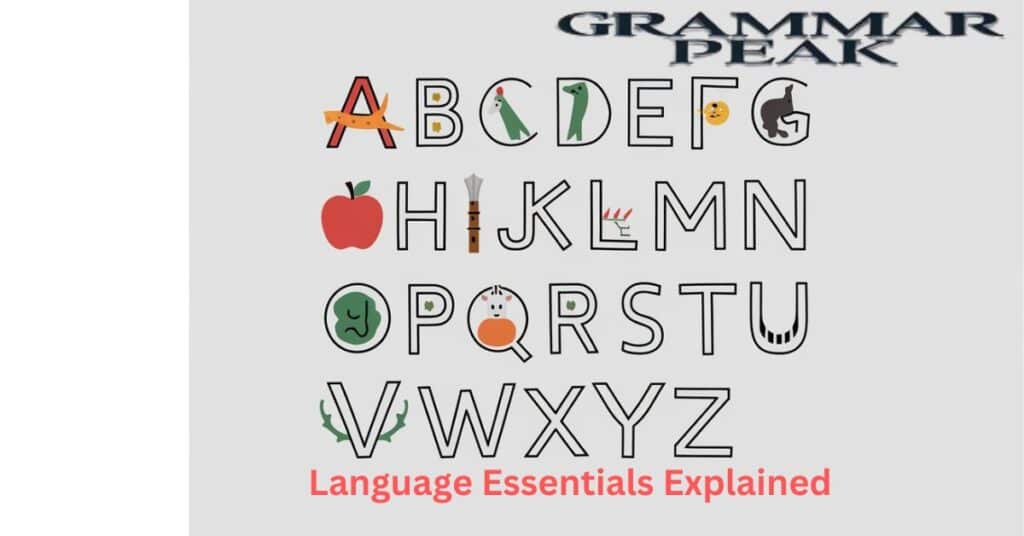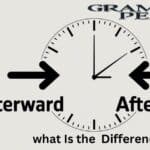The English alphabet consists of 26 letters, each acting as a building block for words. However, an Alphabet is more than just a group of letters. It is a writing framework that follows orthography rules, allowing for word formation and sentence structure.
A Letter is a symbolic representation of a phoneme, which means it represents speech sounds in a writing system. Without letters, forming words and sentences would be impossible. Meanwhile, an Alphabet organizes letters systematically, following linguistic rules that ensure consistency in text processing. In linguistics, every writing system follows certain orthographic principles, and understanding these rules improves literacy and letter recognition.
What are Letters?
A letter is a symbol used in a writing system to represent a speech sound or phoneme. Each language has its own set of letters, which are combined to form words and sentences. In the English alphabet, there are 26 letters, divided into vowels (A, E, I, O, U) and consonants (B, C, D, F, G, etc.). These letters follow specific orthographic rules that define spelling and word formation, helping in communication and text processing.
In linguistics, a letter is the smallest unit of a writing framework that follows established writing conventions. Each letter has a phoneme representation, which means it corresponds to a particular speech sound. Understanding letters is crucial for literacy, letter recognition, and syntax analysis. Without letters, structured language and writing systems would not exist, making them an essential part of human expression.
Explore These Letter or Alphabet: Understanding the Difference
What are Alphabets?
An alphabet is a writing system made up of a set of letters arranged in a specific order to represent the sounds of a language. The English alphabet consists of 26 letters, while other alphabets like the Greek alphabet and Cyrillic alphabet have different numbers of letters.
Each alphabet follows unique orthographic rules, influencing spelling, word formation, and sentence structure. Understanding an alphabet helps with literacy, text processing, and effective communication in both written and spoken language.
Unlike other writing systems that use symbols or characters to represent entire words, an alphabet relies on letters to represent phonemes or speech sounds. This system makes reading and writing more efficient, allowing for better phoneme representation and symbolic representation of words.
Letter vs Alphabet: The Differences
The difference between a letter and an alphabet is crucial in understanding how writing systems function. A letter is a symbol representing a phoneme or speech sound, while an alphabet is a structured writing framework that consists of multiple letters arranged in a fixed order.
A letter functions as a building block in linguistics, helping with spelling, phoneme representation, and text processing. In contrast, an alphabet serves as a symbolic representation of a language’s writing conventions.
For example, the letter B represents a specific sound, while the alphabet includes all the letters needed for writing in a language. Below is an alternative comparison table highlighting key distinctions:
Comparison Between Letter and Alphabet
| Feature | Letter | Alphabet |
| Definition | A single character representing a sound. | A system containing all letters in a language. |
| Purpose | Helps in spelling and phonetics. | Provides a writing framework for communication. |
| Number | Limited to individual symbols (A, B, C). | Contains a sequence of letters (A-Z). |
| Structure | Each letter is a unit of writing. | An alphabet organizes multiple letters. |
| Example | The letter “C” represents the sound /k/. | The English alphabet consists of 26 letters. |
| Role in Language | Used in word formation and sentence structure. | Defines the language structure and orthography. |
Read Must Be Letter or Alphabet: Understanding the Difference
Origins of the Words “Letter” and “Alphabet”
Origins of “Letter”
The word “Letter” comes from the Latin word littera, which originally meant a written character or a symbolic representation used in writing systems. In ancient times, civilizations developed letters to represent phonemes, making it easier to record and share information.
Over the centuries, letters became essential for spelling, literacy, and language structure, allowing people to express speech sounds in written form. The development of letters played a crucial role in shaping modern orthography, leading to standardized text processing and efficient communication.
Origins of “Alphabet”
The term “Alphabet” comes from the Greek language, formed by combining the names of its first two letters: Alpha (Α) and Beta (Β). The Greek alphabet played a crucial role in the development of many writing systems, influencing the Latin alphabet, which later became the foundation of the English alphabet.
Over time, the word “alphabet” was adopted into Latin and eventually into English, where it came to represent an organized writing framework composed of letters used for word formation and sentence structure. Ancient alphabets were developed to improve phoneme representation and make communication more efficient. Unlike earlier writing systems, which used symbols or characters for entire words, an alphabet assigns letters to individual speech sounds.
FAQ” S
What is the main difference between a letter and an alphabet?
A letter is a symbol representing a sound, while an alphabet is a set of letters used in a writing system.
How many letters are in the English alphabet?
The English alphabet has 26 letters, including vowels and consonants.
Do all languages use an alphabet?
No, some writing systems, like Chinese, use characters instead of an alphabet.
What is the origin of the word “alphabet”?
The term “alphabet” comes from the Greek letters Alpha (Α) and Beta (Β).
Why is understanding letters and alphabets important?
It helps with literacy, spelling, phonetics, and effective communication in any language.
Conclusion
Understanding the difference between a letter and an alphabet is essential for mastering language structure and text processing. A letter is a symbol representing a phoneme, while an alphabet is a complete writing system that organizes letters for communication. The English alphabet consists of 26 letters, each playing a role in spelling, phoneme representation, and word formation. Knowing these distinctions improves literacy and helps in learning different writing conventions. Whether for reading, writing, or language development, both letters and alphabets are fundamental to human communication.

Mason Blake is an experienced blogger with a passion for language and communication. With years of expertise in crafting informative and engaging content, Mason shares valuable insights on grammar and writing. His clear, concise, and reader-friendly approach has earned him a loyal following, helping readers sharpen their language skills and master the art of effective communication.







